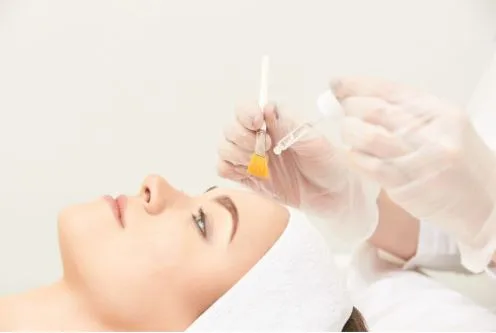Cosmetic Dermatology Explained: Popular Treatments & What to Expect
If you’ve been curious about smoothing fine lines, fading sun spots, or simply dialing up your glow, you’ve probably bumped into the term cosmetic dermatology. It sits at the intersection of medicine and aesthetics—where board-certified dermatologists use science-backed treatments to help skin look clearer, smoother, and more youthful. This guide breaks down what cosmetic dermatology includes, the most popular options on today’s menus, and exactly what you can expect before, during, and after an appointment.
What Is Cosmetic Dermatology?
Cosmetic dermatology focuses on improving the appearance of skin, hair, and nails. Unlike medical dermatology, which treats diseases like psoriasis or skin cancer, cosmetic care targets concerns such as wrinkles, pigmentation, acne scars, enlarged pores, and volume loss. The key difference is intent: medical dermatology restores health; cosmetic dermatology enhances appearance. Many patients benefit from both—treating breakouts with prescription meds, for instance, while using lasers or peels to fade lingering marks.
Popular Treatments (And What They Actually Do)
Neuromodulators (Botox®, Dysport®, Xeomin®, Jeuveau®)
These purified proteins temporarily relax the tiny muscles that create expression lines—think frown lines (the “11s”), forehead creases, and crow’s feet. Results appear in 3–7 days, peak at about two weeks, and last 3–4 months on average. Sessions are quick (often under 15 minutes) and require no downtime. Expect a few tiny pinpricks; makeup can usually go back on the same day.
Dermal Fillers (Hyaluronic Acid, Calcium Hydroxylapatite, etc.)
Fillers restore or add volume to soften folds (like nasolabial lines), plump lips, contour cheeks and jawlines, and rejuvenate hands. Hyaluronic acid (HA) fillers are the most popular because they’re reversible; others last longer and can be great for structure. Results are immediate, with mild swelling or bruising for a few days. Longevity ranges from 6–18 months depending on the product and area.
Chemical Peels
From light lunchtime peels to deeper resurfacing, acids like glycolic, salicylic, TCA, and Jessner’s formulas exfoliate the top layers of skin. Light peels brighten and smooth with minimal flaking; medium peels tackle wrinkles and pigment with a few days of downtime; deep peels provide dramatic smoothing but demand longer recovery and strict aftercare. Your dermatologist will match peel strength to your skin type and goals.
Laser & Light Treatments (IPL, Fractional, Resurfacing)
Lasers and intense pulsed light (IPL) target pigment, redness, texture, and laxity.
- IPL/photofacials fade sun spots and diffuse redness with little downtime.
- Fractional non-ablative lasers (often called “Fraxel®” style) improve texture, pores, and acne scars with a few days of redness.
- Ablative lasers (CO₂, Er:YAG) resurface more deeply for wrinkles and scars—expect more social downtime but bigger results.
Most patients need a series for best improvement.
Microneedling & RF Microneedling
Classic microneedling uses tiny needles to create micro-channels that stimulate collagen, improving fine lines, scars, and texture with minimal downtime. RF microneedling adds radiofrequency energy for firmer skin and better results on crepey areas and mild laxity. Plan for 2–4 sessions spaced a month apart.
PRP/PRF (Platelet-Rich Plasma/Fibrin)
Your own blood is spun to concentrate growth factors, then applied or injected to encourage healing and collagen. It’s often combined with microneedling (hello, glow) or used under the eyes and in the scalp for early hair thinning. Downtime is light; results appear gradually over weeks.
Thread Lifts
Dissolvable threads placed under the skin provide a subtle lift of the cheeks, jowls, or brows while stimulating collagen as they dissolve. Think “snatched but still you.” Results last around a year, with a few days of tenderness and potential bruising.
Body Contouring (CoolSculpting®, Kybella®, Devices)
Nonsurgical fat reduction options include controlled cooling, injectable deoxycholic acid for under-chin fullness, and advanced devices that combine heat and muscle stimulation. These are best for pinchable, localized pockets—not for weight loss. Expect gradual results over 2–3 months.
Medical-Grade Skincare & Maintenance
In cosmetic dermatology, in-office procedures do the heavy lifting, but daily skincare sustains the results. Prescription or clinic-grade retinoids, vitamin C serums, pigment inhibitors (like azelaic acid or hydroquinone when appropriate), and diligent sunscreen form the backbone of any long-term plan.
What to Expect From Start to Finish
The Consultation
A good cosmetic dermatology visit begins with a chat about your goals, budget, and timeline (e.g., “I have a wedding in three months”). Your provider will assess skin type, tone, texture, laxity, and medical history, then create a personalized plan—often blending treatments for synergistic results. Expect clear explanations of benefits, risks, downtime, and maintenance.
Candidacy & Safety
Not every procedure is for every person. Certain medications, autoimmune conditions, pregnancy/breastfeeding, keloid scarring, or active infections can change recommendations. This is why seeing a trained professional—ideally a board-certified dermatologist or an experienced injector/laser specialist under dermatology supervision—matters.
Pre-Treatment Prep
Depending on the procedure, you might be asked to:
- Pause retinoids or acids 3–7 days before peels/lasers.
- Avoid sun exposure and self-tanners.
- Skip alcohol, certain supplements (fish oil, vitamin E), and blood thinners if safe/approved to reduce bruising.
- Arrive with clean skin and no makeup.
During the Visit
Most treatments are faster and more comfortable than people expect. Providers often use numbing cream, cool air, or vibration devices to reduce discomfort. You’ll receive aftercare instructions before you leave, along with what to watch for and when to book your follow-up.
Downtime & Aftercare (Real Talk)
- No/Minimal Downtime: neuromodulators, light peels, IPL (sometimes mild redness), standard microneedling.
- A Few Social Days: fillers (possible swelling/bruising), fractional lasers, RF microneedling.
- More Recovery: ablative lasers and deep peels—plan for crusting, peeling, or redness that can last 1–2 weeks, with lingering pinkness.
Aftercare typically includes gentle cleansing, thick moisturizers, strict sun protection, and avoiding hot yoga/saunas or active products until cleared.
Risks & Side Effects
Every procedure carries potential risks—redness, swelling, bruising, temporary bumps or asymmetry, pigment changes (especially in deeper skin tones without proper settings), infection, or in rare cases vascular complications with fillers. Your provider should discuss these, use proper techniques, and share an emergency plan. If anything feels off post-treatment—severe pain, dusky skin, vision changes—contact the clinic immediately.
Results Timeline & Maintenance
- Quick wins (days to weeks): neuromodulators, light peels, IPL brightening.
- Progressive gains (weeks to months): collagen builders like microneedling, RF microneedling, fractional lasers, PRP/PRF.
- Longevity varies: neuromodulators last ~3–4 months; fillers 6–18 months; collagen-stimulating improvements can last longer with good skincare and sunscreen. Maintenance visits keep results consistent.
How to Choose the Right Provider
Credentials & Experience
Seek a practice known for cosmetic dermatology with board-certified dermatologists, physician associates, or nurses who specialize in aesthetics. Ask how often they perform the procedure you want and whether they’re trained to manage complications.
Technology & Product Portfolio
A one-size-fits-all clinic often has, well, one size. Diverse lasers, peel types, and filler families let them customize for your skin tone, type, and goals.
Before-and-Afters & Reviews
Look for unretouched, well-lit photos of real patients with concerns similar to yours. Read reviews for notes on bedside manner, safety, and follow-up care.
Transparent Pricing & Plans
Good clinics explain costs up front and map out series/maintenance so you can budget. Bundled treatment plans and membership programs can help make long-term cosmetic dermatology more affordable.
FAQs (Short and Sweet)
Will I still look like me?
Yes—the goal of modern cosmetic dermatology is natural-looking refreshment, not a new face. Conservative dosing and gradual plans prevent the “overdone” look.
Is it painful?
Most treatments are tolerable with numbing, cooling, or brief pinches. Ablative lasers and deeper peels can be more intense but are planned with robust aftercare.
Can darker skin tones do lasers and peels?
Absolutely—with the right devices, parameters, and pre/post-care. Provider experience with varied skin tones is crucial to reduce risks of hyper- or hypopigmentation.
How far in advance should I start before an event?
Work backward at least 8–12 weeks. Neuromodulators need two weeks to peak; series-based treatments (like microneedling or IPL) need multiple sessions; fillers benefit from two-week settling time.
Who should skip cosmetic treatments?
Anyone with active infections, uncontrolled medical conditions, or who is pregnant/breastfeeding (depending on the treatment) should defer. Your provider will screen you.
A Sample Starter Plan (Hypothetical)
If your main goals are “brighter, smoother, more even” with minimal downtime:
- Month 1: IPL or light chemical peel + medical-grade skincare reset (cleanser, vitamin C, moisturizer, broad-spectrum SPF 30+, nighttime retinoid).
- Month 2: Microneedling or RF microneedling session #1; consider subtle HA filler for undereye hollows or lip hydration if appropriate.
- Month 3: Microneedling session #2 + neuromodulator touch-up for lines.
- Beyond: Maintenance every 3–4 months for neuromodulators, seasonal peels/lasers, and daily sunscreen to protect your investment.
Red Flags to Watch For
- No consultation or medical history taken.
- Pressured “today-only” deals.
- Vague on product names, doses, or device settings.
- Lack of emergency protocols or after-hours contact info.
- Inconsistent pricing or refusal to show before-and-afters.
The Bottom Line
Cosmetic dermatology isn’t about chasing perfection; it’s about strategic, safe tweaks that help you feel more confident in your skin. The best results come from a personalized plan that combines in-office procedures with consistent at-home care—and a provider who listens, educates, and guides you honestly. If you’re ready to explore options, start with a consultation, bring photos of your goals, and ask every question you have. Your skin, your rules—and with a thoughtful approach, your results will look like the best version of you.



